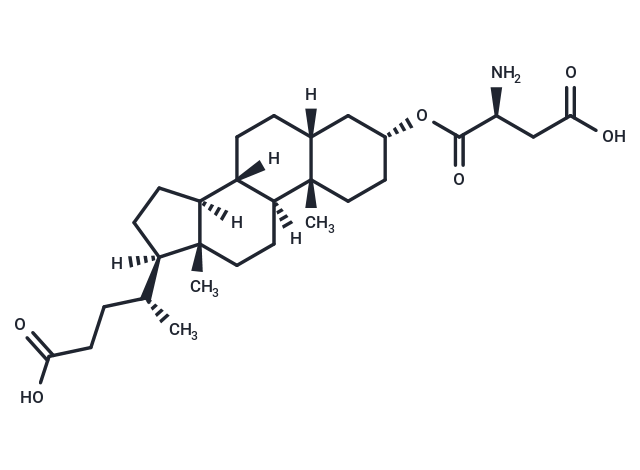Shopping Cart
- Remove All

Your shopping cart is currently empty


| Pack Size | Price | Availability | Quantity |
|---|---|---|---|
| 5 mg | $523 | 6-8 weeks | |
| 25 mg | $1,520 | 6-8 weeks | |
| 50 mg | $1,980 | 6-8 weeks | |
| 100 mg | $2,500 | 6-8 weeks |
| Description | Lith-O-Asp is a sialytransferase (ST) inhibitor,(IC50s:12-37 μM). |
| In vitro | The results indicate that Lith-O-Asp reduces the activity of both a-2,3- and a-2,6-sialyltransferases, consequently inhibiting the transfer of sialic acids to target glycoproteins[1]. Despite showing no significant growth inhibition effect on various cancer cell lines at doses of 10, 30, and 60 μM, in vitro assays reveal Lith-O-Asp's capability to suppress the activities of ST3Gal I, ST3Gal III, and ST6GalI, with IC50 values ranging from 12 to 37 μM. Furthermore, flow cytometry analysis demonstrates a marked decrease in the expression of cell surface a-2,3- and a-2,6-sialylated antigens. |
| In vivo | In lung tissues of mice treated with DMSO and observed using the IVIS in vivo imaging system, a significant presence of secondary metastatic cancer cells was noted 26 days post-fat pad inoculation. Conversely, mice treated with Lith-O-Asp exhibited a reduction in lung metastases, with only 3 of 8 mice showing any metastasis compared to all DMSO-treated mice. The average number of tumor nodules per mouse in the DMSO group was 11±9, while in the Lith-O-Asp group, it was significantly lower at 2±4 nodules. Additionally, 4T1-Luc illumination signals, indicating tumor presence, were markedly stronger in the DMSO control group than in the Lith-O-Asp-treated group on days 7 and 9[1]. |
| Molecular Weight | 491.66 |
| Formula | C28H45NO6 |
| Cas No. | 881179-02-8 |
| Storage | Powder: -20°C for 3 years | In solvent: -80°C for 1 year | |||||||||||||||||||||||||||||||||||
| Solubility Information | DMSO: 106 mg/mL (215.60 mM) | |||||||||||||||||||||||||||||||||||
Solution Preparation Table | ||||||||||||||||||||||||||||||||||||
DMSO
| ||||||||||||||||||||||||||||||||||||

Copyright © 2015-2024 TargetMol Chemicals Inc. All Rights Reserved.